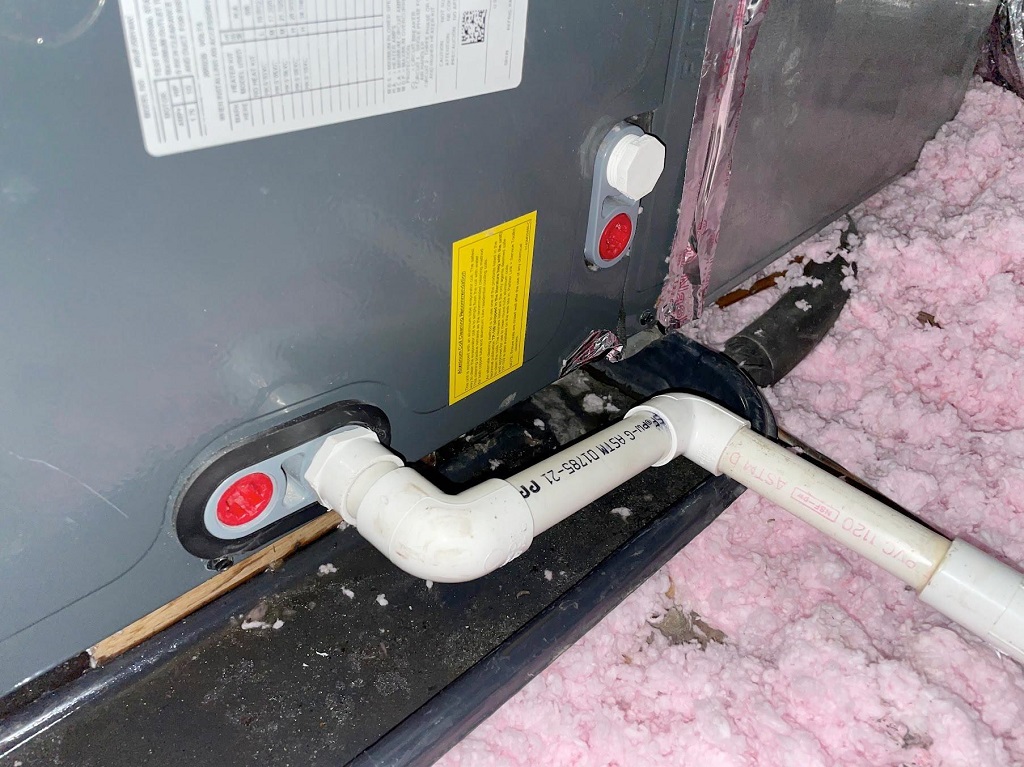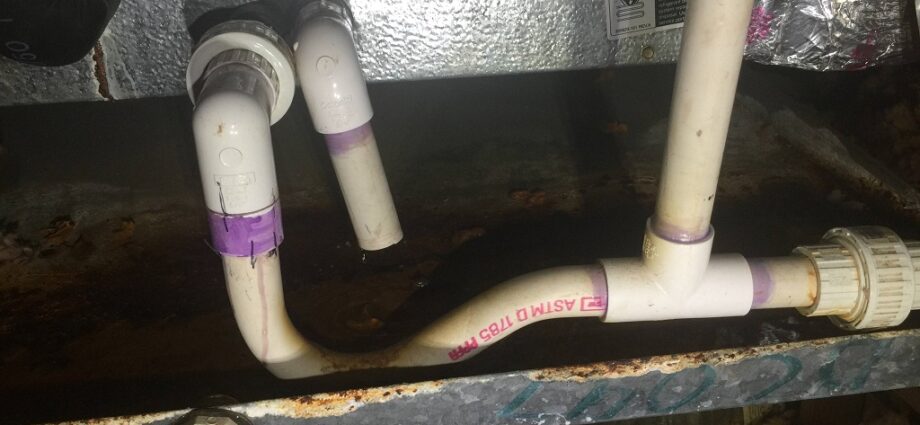Your air conditioner works tirelessly throughout the summer, keeping your home cool and comfortable. But during this process, it also produces condensation – a natural byproduct of removing humidity from the air. This condensate needs to drain away efficiently to prevent problems. The AC drain line is the unsung hero, silently channeling this moisture out of your home. But where exactly is this line located inside the house?
Understanding the AC Drainage System
Before diving into the location of the drain line, let’s understand the bigger picture of your AC’s drainage system. Here’s a breakdown:
-
Evaporator Coil: This is the part of your AC unit located indoors, typically within the air handler or furnace cabinet. As warm, humid air passes over the evaporator coil, it cools down, causing moisture to condense on the coil’s surface.
-
Drain Pan: A shallow pan sits directly below the evaporator coil to collect the condensate. This prevents the water from dripping directly onto your floors or ceiling.
-
AC Drain Line: This is a small PVC pipe that connects to the drain pan and carries the condensate away from the air handler. The drain line typically exits the house through an exterior wall, discharging the condensate outdoors.
Finding the AC Drain Line Inside
The indoor section of the AC drain line usually starts at the drain pan and disappears somewhere within your house. Here are some common locations to find it:
-
Basement Floor Drain: In many homes, the AC drain line might connect directly to a floor drain in the basement. Look for a small PVC pipe leading from the drain pan to a drain on the floor.
-
Utility Sink Drain: Another common location is a utility sink drain, often found in laundry rooms or basements. The drain line might connect directly to the sink’s P-trap (the U-shaped pipe under the sink).
-
Secondary Drain Pan Overflow: Some systems have a secondary drain pan with a separate overflow line. This line typically exits the house through an exterior wall and acts as a backup in case the primary drain line clogs.
Clues to Help You Locate the Drain Line
If you’re still struggling to find your AC drain line, here are some additional clues that might help:
-
Follow the Trail: Look for the drain pan under your evaporator coil and see if you can spot a small PVC pipe leading out of it.
-
Listen for the Drip: If your AC is running, you might hear a faint dripping sound as condensate travels through the drain line. Follow the sound to locate the line’s path.
-
Check Your Basement or Utility Room: Look for any exposed pipes near your furnace or air handler, especially around floor drains or utility sinks.
Advanced Techniques (for the Knowledge Seekers):
For those with some plumbing knowledge, here are some advanced techniques to locate your AC drain line:
-
Consult Your Home’s Manual: Your AC unit’s manual might have a diagram or instructions detailing the location of the drain line.
-
Trace the Line from Outside: If you can locate the drain line’s exit point on your exterior wall, follow it back towards the house. This might require crawling under the house or accessing crawl spaces, so proceed with caution.
-
Use a Plumber’s Snake: In some cases, the drain line might be clogged and inaccessible. A plumber’s snake, a long, flexible cable, can be inserted into the drain line to clear any blockages and potentially reveal its path.

What to Do if You Can’t Find the Drain Line
If you’ve exhausted all options and still can’t locate your AC drain line, don’t hesitate to call a qualified HVAC technician. They have the expertise and tools to diagnose the problem and identify the drain line’s location.
Maintaining Your AC Drain Line
Once you’ve found your AC drain line, it’s crucial to maintain it properly. Here are some tips:
-
Regular Cleaning: Pour a small amount of white vinegar or a bleach solution down the drain line periodically to prevent mold and algae growth, which can cause clogs.
-
Inspect for Leaks: Look for any signs of leaks or moisture damage around the drain pan and the line’s connection points.
-
Address Clogs Promptly: If you notice water backing up from the drain pan or hear gurgling sounds, it might indicate a clog. Address it promptly to prevent water damage.
Related: A GUIDE TO FIXING YOUR LEAKY BATHTUB FAUCET
Conclusion
Understanding the location of your AC drain line inside the house empowers you to maintain it effectively and prevent potential problems. By following the tips above, you can ensure your AC continues to operate efficiently and keep your home cool and comfortable throughout the summer. Remember, if you encounter any difficulties or suspect a clog, don’t hesitate to seek help from a qualified HVAC technician. They can not only locate the drain line but also diagnose and resolve any drainage issues your AC system might face.
Here are some additional points to consider:
-
Safety First: When attempting to locate your drain line, prioritize safety. Avoid crawling under the house or accessing crawl spaces without proper support and ventilation.
-
Respect Your Limits: If you’re not comfortable following the advanced techniques or suspect a major clog, it’s best to call a professional.
-
Seasonal Maintenance: Consider scheduling an annual AC maintenance check-up with a qualified technician. This routine maintenance often includes cleaning the drain line, ensuring optimal performance, and preventing future issues.
By understanding your AC’s drainage system, taking proactive maintenance measures, and seeking professional help when needed, you can ensure your air conditioner keeps your home cool and comfortable for years to come.











